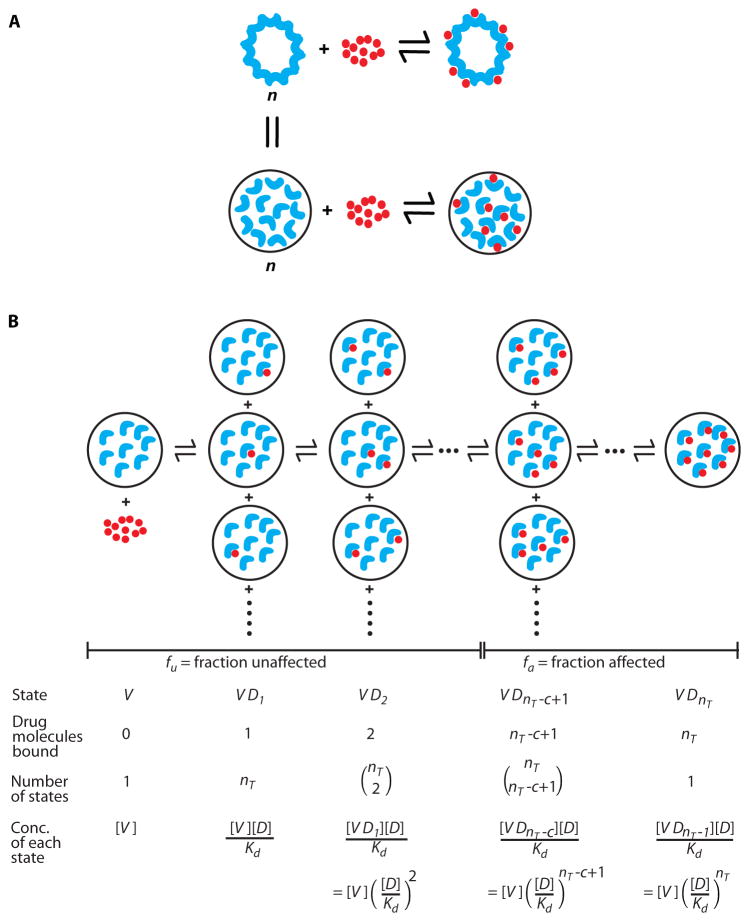Figure 1.
The critical subset model. (A) A virion (or virally infected cell) can be viewed as a multivalent receptor containing n identical copies of a given drug target such as HIV-1 protease. Although not physically linked to one another, these copies are spatially constrained within the virus particle or infected cell. (B) Sequential binding of a protease inhibitor (red circle) to the protease dimers (blue crescents) within a virion. The concentrations of the various bound states can be determined by the law of mass action, assuming a single unchanging dissociation constant, Kd. Assuming that successful completion of the relevant step in the virus life cycle requires a critical number c of functional unbound copies of the drug target, fa can be computed as the concentration of inhibited states divided by the concentration of all possible states (Equation 3). fu is equal to 1−fa. Similar arguments can be applied to RT except that the RT molecules are present within the reverse transcription complex in an infected cell.

